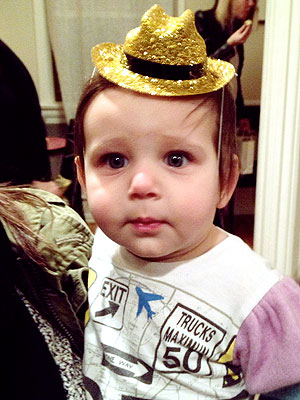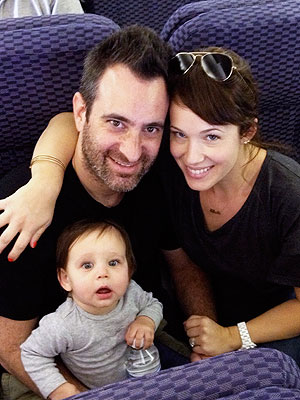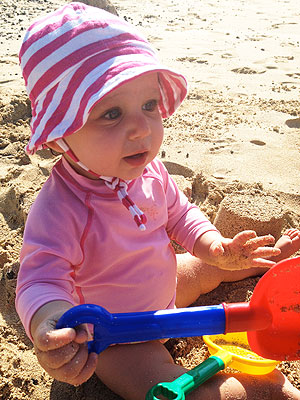WHETHER arranged marriages produce loving, respectful relationships is a question almost as old as the institution of marriage itself. In an era when 40 to 50 percent of all American marriages end in divorce, some marriage experts are asking whether arranged marriages produce better relationships in the long run than do typical American marriages, in which people find each other on their own and romance is the foundation.
Experts also ask whether there are lessons in how arranged marriages evolve that can be applied to nonarranged marriages in the United States. Among them is Robert Epstein, a senior research psychologist at the American Institute for Behavior Research and Technology in Vista, Calif., and author of a new study, “How Love Emerges in Arranged Marriages.”
He found that one key to a strong arranged marriage is the amount of parental involvement at its start. The most important thing parents of the couple do, he said, is to “screen for deal breakers.”
“They’re trying to figure out whether something could go wrong that could drive people apart,” Dr. Epstein said.
Some couples who have entered into satisfying arranged marriages do attribute the success of their unions to the involvement of their parents. A. J. Khubani was 25 in 1985 when his parents tried to get him to visit Inder Sen Israni and Maya Israni in Jaipur, India, friends of the Khubani family, and meet the couple’s daughter Poonam.
“I just refused,” said Mr. Khubani, who was not keen on settling down because he had just started Telebrands, a company in Fairfield, N.J., that sells inventions via infomercials on late-night television. “I didn’t see why it was so important that I had to fly across the world to see one girl,” Mr. Khubani, now 52, remembered.
Ms. Israni, now Mrs. Khubani, was not ready, either. At the time she was a soap opera star and rising Bollywood actress.
Getting them to meet took some prodding: Mr. Khubani’s father, knowing that his son was going to Asia on business, offered to pay his way if he stopped in Jaipur. The young man and woman both relented, with the casual assumption that they would just please their parents “and that would be the end of it,” Mrs. Khubani said.
When they finally met, neither was impressed. Mrs. Khubani recalled, “It wasn’t love at first sight at all.” Love did not kick in until Mr. Khubani became sick and the young woman he had just met stayed by his bedside to care for him. “Nobody understood his accent because he was so American,” she said, and so she was his translator. For Mr. Khubani, her caring and elegant manners sealed the deal.
“Spending a couple of days in the room with her, alone, I fell in love with her,” he said.
They have been married for 27 years.
Arranged marriages can work “because they remove so much of the anxiety about ‘is this the right person?’ ” said Brian J. Willoughby, an assistant professor in the School of Family Life at Brigham Young University. “Arranged marriages start cold and heat up and boil over time as the couple grows. Nonarranged marriages are expected to start out boiling hot but many eventually find that this heat dissipates and we’re left with a relationship that’s cold.”
He also credited supportive parents.
“Whether it be financial support for weddings, schooling or housing, or emotional support for either partner, parents provide valuable resources for couples as they navigate the marital transition,” Dr. Willoughby said.
But does it really take a village to build a strong marriage?
“I don’t think love marriage and arranged marriage are as different as we make them out to be,” said Michael J. Rosenfeld, an associate professor in the department of sociology at Stanford University. “The people we end up married to or partnered up with end up being similar to us in race, religion and class background and age, which means that they might not be all that different from the person that your mother would have picked for you.”
Divorce rates have climbed in countries like South Korea, Iran, China, and even in India, where parents traditionally have had a strong hand in the marriages of their children. And while India may boast of having one of the lowest divorce rates in the world — below 3 percent by some estimates — divorce there still carries a great stigma. It is also a country in which divorce sometimes is not an option for many women and those seeking dissolution have encountered violence.
In the United States, both parents and young adults still value marriage, Dr. Willoughby said. Their differences, he wrote in an e-mail, “are in sequencing and timing. It’s more about parents and children disagreeing about how they get to marriage and when it happens.”
With “free-range” marriages predominant, this approach discourages parental intervention.
“We celebrate autonomy,” noted Dr. Epstein, which, he explained, is why adult children bristle at the idea. But given the speed at which couples meet, greet, cohabitate and separate these days, he said, he thought there was some logic in trying a method that has worked for so many couples and in so many cultures.
Orthodox Jews in the United States are known for arranging marriages, with some parents using professional matchmakers.
“In the secular world, a lot of the times a couple will fall in love with each other and then at that point they lose objectivity,” said Rabbi Steven Weil, the executive vice president at the Orthodox Union in New York. In arranged marriages, however, “there is a lot of homework, a lot of energy spent, before a young man and woman fall in love with each other. For that reason, the parents are involved. But obviously it’s the decision of the young man and woman, but a parent knows a child.”
For many Korean mothers, the prospect of marriage for their children is not a wait-for-it option. These parents also call in professional matchmakers to direct their career-minded children into becoming marriage-minded.
Diane Kim of Janis Spindel Serious Matchmaking in New York reported that some 40 percent of her clients in the agency’s Asian-American division are mothers calling on behalf of their sons. Many have a “demand” list of expectations Among them: the woman must be beautiful, have an Ivy League education, come from a good family whose members are also educated, and have professional goals similar to their son.
“And then they say, ‘Can you find somebody that fits that mold?’ ” said Ms. Kim, whose matchmaking fees start at $5,000 and include 12 introductions. “My job is not just about setting people up; it’s about educating the parents.”
Bringing about these mother-tested, child-approved marriages is not easy. “I have instances where parents pay without the knowledge of their children,” Ms. Kim said, “and I would have to contact the children and tell them, ‘Hey, this might be a little awkward — and a big surprise — but your parents have signed you up. Don’t freak out.’ ”
It was through the efforts of Ms. Kim, while she was employed at another matchmaking service, Duo, that Neil Hwang, 34, a management consultant for a Manhattan investment firm, married his wife, Patty, last July.
“My mother was very proactive about getting me set up to meet women,” said Mr. Hwang, who also noted that both his parents were members of a social club that those in Mr. Hwang’s age group had nicknamed Korean Parents United for Unmarried Children.
Mrs. Hwang, a social studies teacher at a public high school in Bergen County, N.J., had also reached the crisis age of 31 and was under pressure from her parents. She was gently coerced into trying out a matchmaking service at the recommendation of her father, who had already paid for it. When the couple married last summer, Mrs. Hwang recalled her parents saying with some degree of triumph, “We knew it was going to happen!”
When his first marriage ended in divorce, Deepak Sarma, 43, a professor of religious studies at Case Western Reserve University, said he learned a valuable lesson in doing things in accordance with family approval. When it came time to make a second go at marriage, he approached his parents, asking, “Who’s out there for me?” But as an Indian-American divorcée who was not a doctor, lawyer or engineer, it was clear to his parents that his “low desirability” would make any marital arrangement difficult.
Once, while Professor Sarma was in India, his parents arranged for him to meet with a few prospective fathers-in-law. Although his offer implicitly included “a passageway to America,” he said they immediately discarded his candidacy as a groom.
“I wasn’t good enough,” he said.
Instead, he met a woman at a networking event in Cleveland in 2004. She was an internist at a clinic nearby and happened to see Mr. Sarma, a Hindu, on a panel speaking about Jainism, a religion practiced by her family, who had long insisted on her marrying within the faith. Hearing Mr. Sarma talk about a world that had closed her off to so many people, that woman, now his wife, Dr. Rita Sarma, felt a connection.
“I could hardly stay in tune with the lecture itself because I was thinking, ‘Who is this guy?’ ” Dr. Sarma said. “He was looking kind of dash. So I lingered around, and I kind of waited.”
The two bonded over their experiences in the culture of American-born confused Desis, slang for Americanized Indians.
“It was serendipitous,” Mr. Sarma said. But he still had to persuade her father, and ultimately had to call on his own father to intercede on his behalf. It was only after all of the in-laws passed one another’s criteria that the green light was given.
Dr. Epstein admitted that the tradition of arranged marriages had no hope of gaining wide acceptance in this country.
“We celebrate rugged individualism that is antithetical to the arranged marriage culture,” he said. He argues instead for deeper parental involvement. “When you realize what it is that the families are doing, it makes excellent sense,” he said.
Which is not unlike the experience of the Sarmas, who found an American-style “love marriage” with a familial twist. Mr. Sarma now revels in the fact that he is living what has long been held up as an American marriage ideal.
“The great irony is, like, I came back here and I married a doctor, right?” he said.














